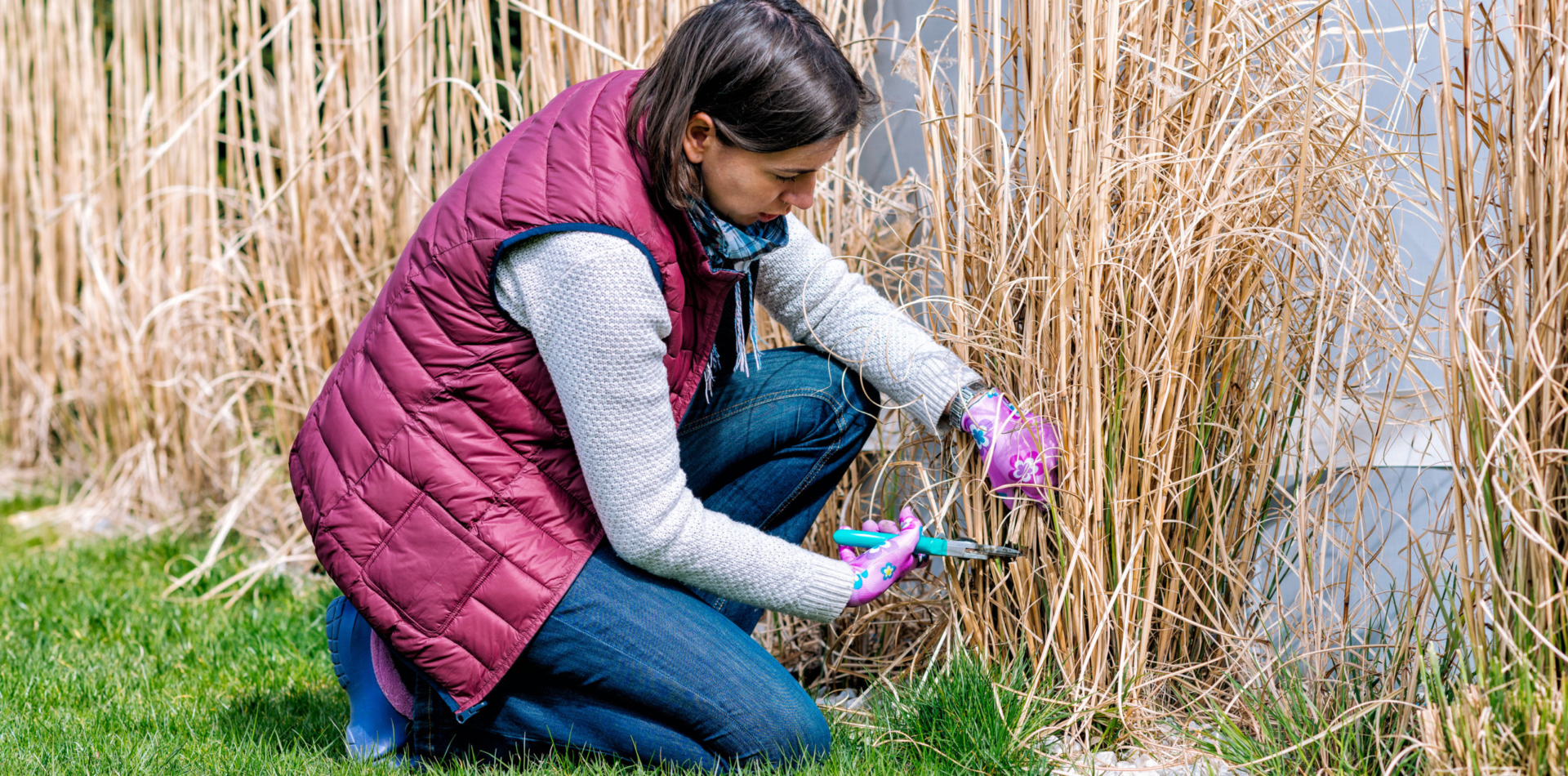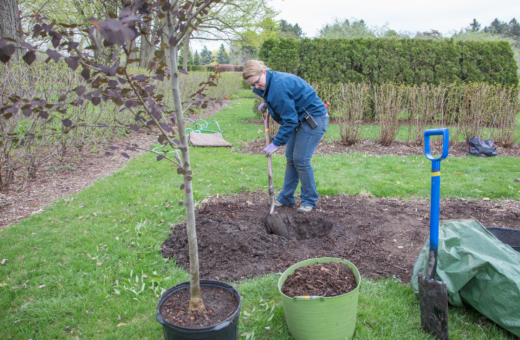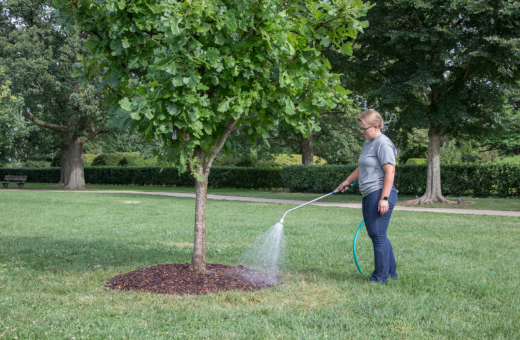Overview
Early March is a perfect time to get ready to garden.
“It’s too soon for digging or planting,” said Sharon Yiesla, plant knowledge specialist in the Plant Clinic at The Morton Arboretum. “But there’s plenty of planning and preparation to do.”
All winter, crews have been preparing for planting the Arboretum’s display beds. They have been seeking out sources for the plants that will structure the garden’s spaces and create a wide variety of colorful, lush, flower-filled displays. They have been planning how they will prepare the soil and when and how they will install plants to give them the best growing conditions. “That’s what you should be doing in your garden, too,” Yiesla said.
Here are some tips from the Plant Clinic to guide your own garden preparations.
Plan Ahead for Plants
Before garden centers fill up with tempting impulse buys, think through what your garden needs and research the plants that might fill those needs. For example, if you feel your shady patio was dull last summer, you might look into options for shade-tolerant annuals that could fill a few containers. If you would like a small tree or shrub to add interest to the front yard, think through the conditions of the site and consider species that might be a good fit. The Plant Clinic can help. “If you go shopping with a list, or at least with a list of a few well-researched alternatives, you’ll save money and choose plants with a better chance of success,” Yiesla said.
Tidy Up
Pick up trash and debris. Cut back ornamental grasses and the stalks of perennials to within 1 or 2 inches of the ground. Prune any broken branches or dead wood on shrubs.
But don’t tidy up too much by raking away the leaves or mulch from the soil. “A layer of plant matter on the soil is healthy,” Yiesla said. “It’s mulch. It insulates the soil to protect plants against late freezes, and it also breaks down slowly to enrich the soil. Soil in the garden should never be bare.”
Reposition Perennials
The freeze-thaw cycles of winter can push some perennials, especially those recently planted, out of the soil, a condition often called frost heave. Gently push the plants back in place. To prevent future frost heave, keep an insulating layer of mulch over their roots.
Be Ready to Start Weeding
Some of the first plants to sprout in spring will be weeds, so start pulling them and digging them up as soon as you spot them. “There’s no way to totally get rid of weeds, but if you start early and weed often, you can stay ahead of them,” Yiesla said.
Sow Seeds for Vegetables
Now is the time to start tomato and pepper seedlings indoors under lights so they will be ready to plant out in the garden in late May. Beginning in early April, you will be able to sow seeds of some more cold-tolerant vegetables such as spinach, carrots, and beets directly in the soil outside. Before then, you can prepare raised beds by spreading compost and gently working it into the top inch or so of soil.
Don’t Dig Too Soon
It takes a while for frozen soil to thaw out, and even then it will likely be waterlogged and sticky. “Wait until your soil is thoroughly thawed and most water has drained away before you do any digging or planting,” Yiesla said. “It’s okay for the soil to be moist when you dig, but not wet.” Working in wet soil can compact it, squeezing the particles together into a dense mass where plants can’t grow. “Be very careful to avoid compacting your soil,” she said.
Prepare to Plant Trees and Shrubs
You can likely begin planting hardy trees and shrubs when the soil is thawed and drained, most likely in early April. First, be sure that you have chosen an appropriate species and that the site you’ve selected will accommodate the mature size of the plant.
“Remember that trees and shrubs get wider as they grow taller,” Yiesla said. “Make sure you know how wide the plant can get in 10 or 20 years and that you’re allowing enough space.” Review the Arboretum’s advice for properly planting a tree before you start.
Think about Watering
Your plants will need watering throughout the growing season, so plan now for how you will deliver water with as little trouble and waste as possible. That might mean laying soaker hoses in perennial beds or around trees to water slowly, deeply, and efficiently. It might mean grouping drought-tolerant perennials in your hottest, driest places, so you rarely have to water that bed. “As the climate changes, the Chicago area is becoming hotter and drier and water is becoming more of an issue,” she said. “We need to develop habits and gardens that save water.”



